
Background
The Springfield EMP was first introduced in 2006. The Enhanced Micro Pistol, EMP, represented a new category of semi-auto pistols. While it did not look significantly different than a standard 1911, it was a completely new design. The EMP was designed around a smaller frame specifically for the 9mm cartridge. This required a completely new set of specifications for the frame, slide, barrel, extractor, firing pin, and other parts. The result was one of the slickest little 9s on the market. Even today, some 17 years later, it continues to be one of Springfield’s best sellers.
The EMP was initially offered in a 3” barrel, compact model, and 4.25”, “Commander” size, model. The EMP was a feature-rich pistol with an ambidextrous safety, match-grade hammer-forged barrel, and excellent sights. When I first shot the EMP, I was impressed with the fit, finish, and overall quality of the pistol. The one negative was that the MSRP, on the EMPs, was north of $1000.00.
Enter the Ronin
In 2020, Springfield launched the Ronin series of pistols. The purpose of the Ronin was to offer pistols that were feature-rich, and value-priced. Each Ronin model was built to the same exacting standards as other models. This included using forged frames and slides, hammer-forged barrels, and quality internal parts. The Ronin also featured a beautiful hot salt blued slide, with polished flats, that is normally found on more expensive firearms. Some changes help reduce the price, including a single side thumb safety and only one factory magazine. Until now, Ronin models were reserved for pistols based on the .45 ACP frame. These included a 5” Government model and 4.25” Light Weight model, offered in .45 ACP and 9mm.
Recently, as part of a revised product line, Springfield announced that the Ronin series would now include the EMP 3” and 4” models. The Ronin EMP replaces the legacy EMP models. Shortly after the introduction, Springfield sent me one of each model, for this review.
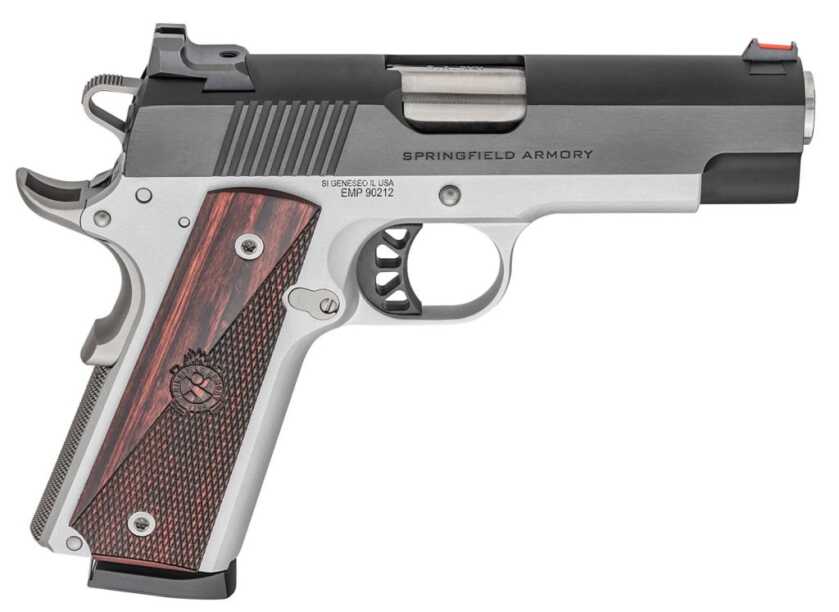
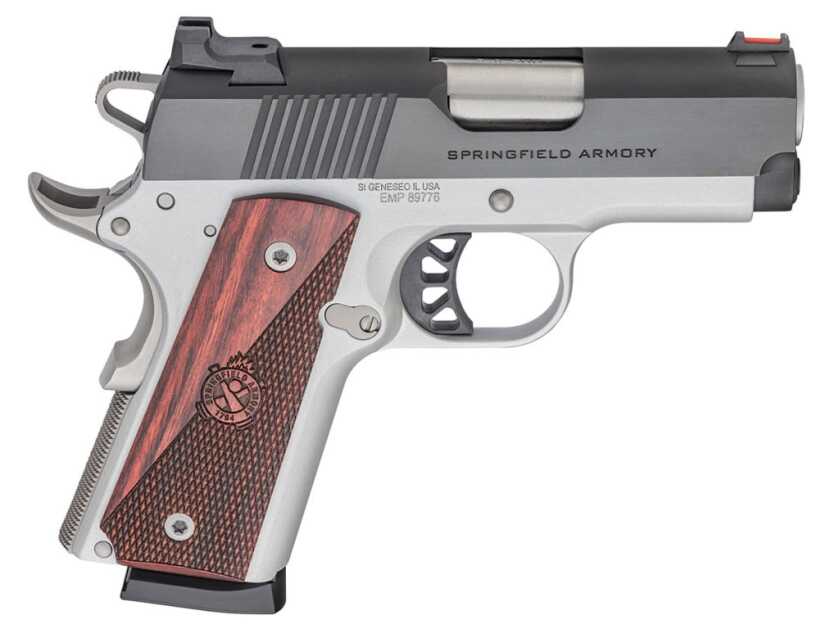
Enhanced Features
Both EMP pistols feature an alloy frame with a clean satin finish. The edges are nicely contoured, with few sharp edges. An extended thumb safety and beavertail grip safety are standard on all Ronin models. The skeletonized trigger features a serrated face while the magazine well is nicely beveled. One feature, I appreciated, is the bevel on the bottom of the mainspring housing. The stocks are thin profile with half checkering and the Springfield crossed cannon logo.


The slide is machined from carbon steel and features a matte finish on the top with polished flats. The rear sight is a “tactical rack” design with white dots while the front sight features a red fiber optic insert. The EMP barrels are a bull design that are match grade with a fully supported ramp.

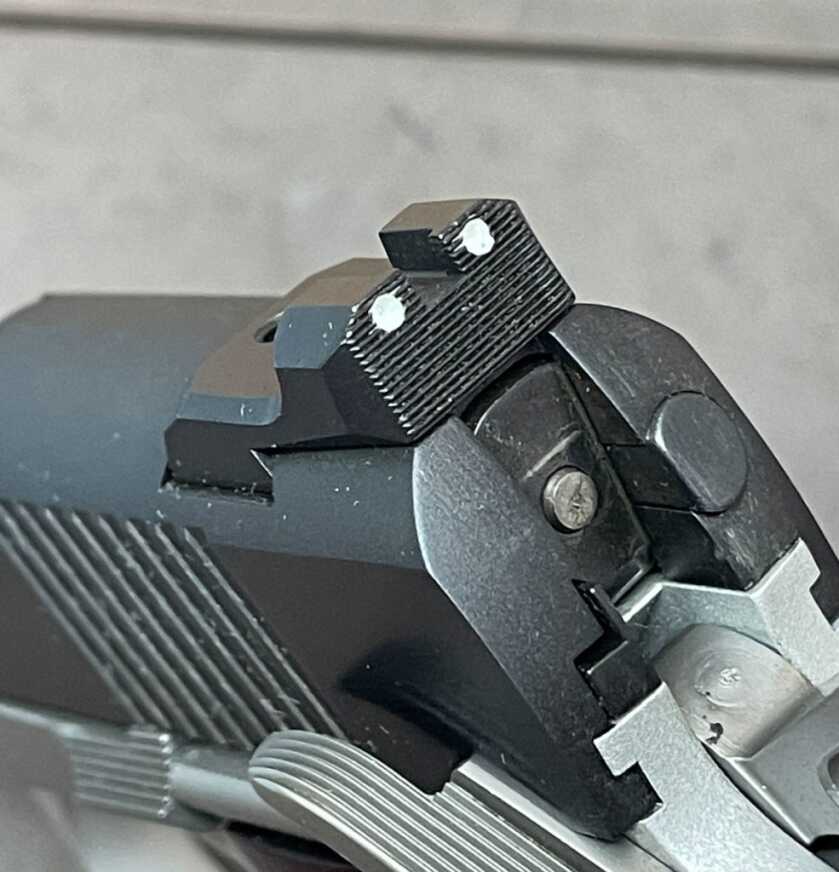
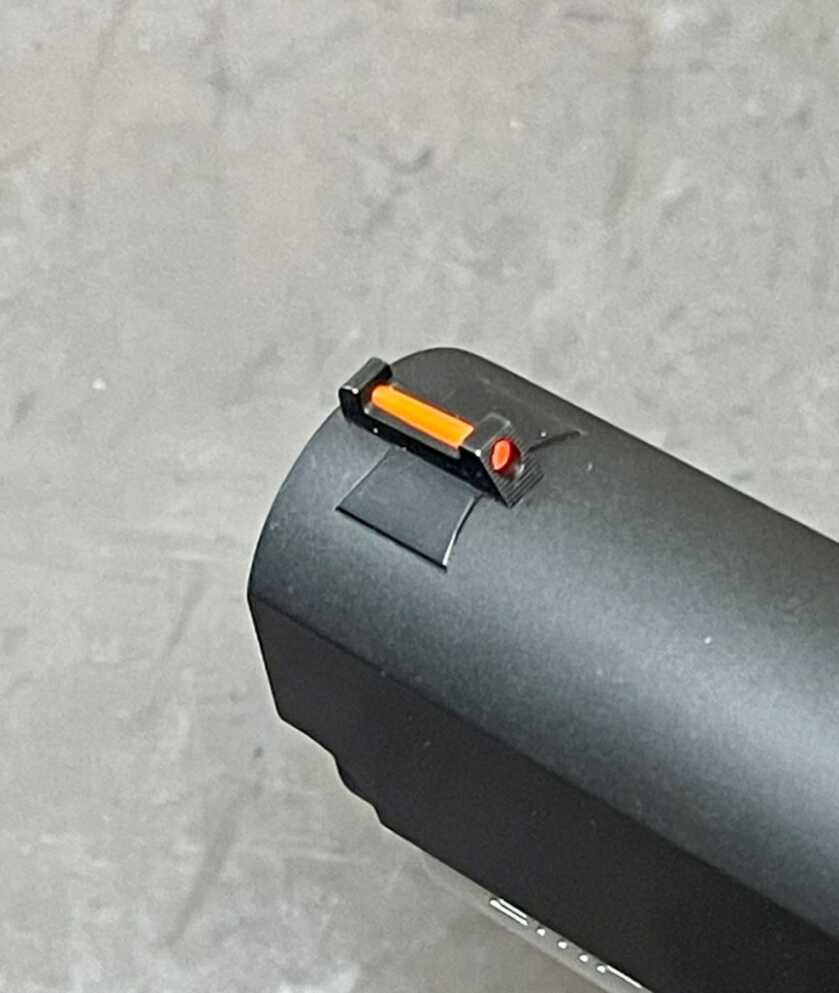
Model Details: Compact vs. Full Size
The 3” model is based on the compact frame and comes with one 9-round magazine that has an extended butt plate. This model has an overall length of 6.6” and weighs 24 ounces. The 3” model also has a dual captive recoil spring with a full-length guide rod. The trigger on the compact model had a very clean break that averaged 4 lbs. 12 oz.
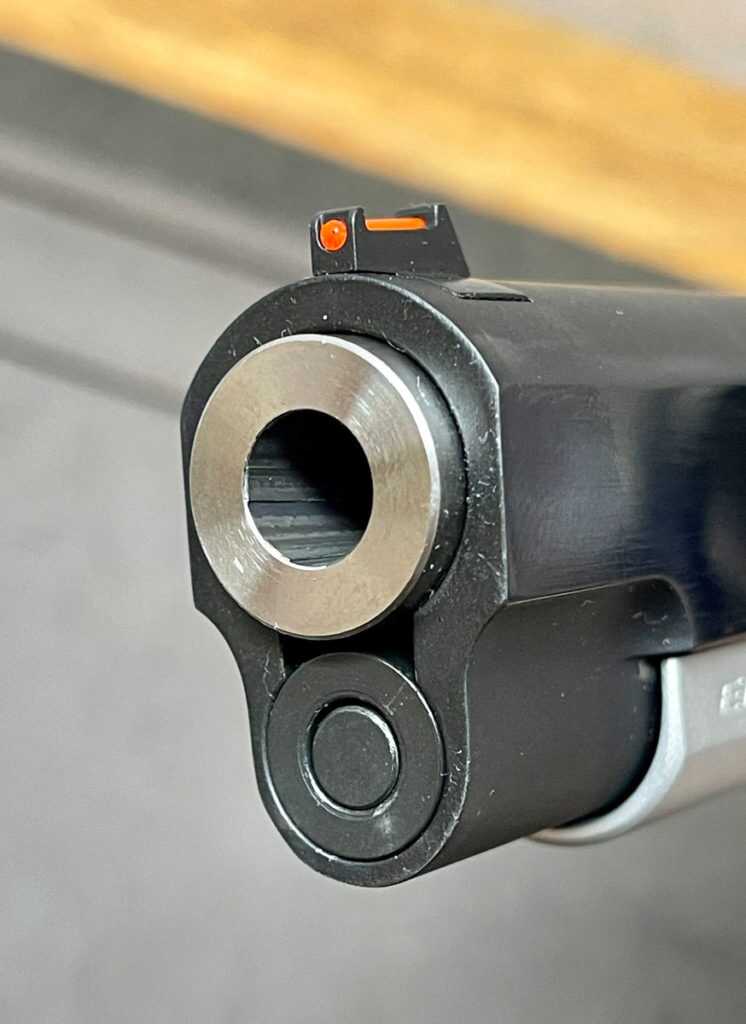

The 4” model has a full size frame and comes with a single 10-round magazine with the standard polymer extended butt plate. It has an overall length of 7.6” and weighs 27.5 ounces. Unlike the compact model, the 4” model features a flat wire recoil spring with a full length guide rod. The trigger on the 4” model was as crisp as the 3” model and averaged 4 lbs. 11 oz.
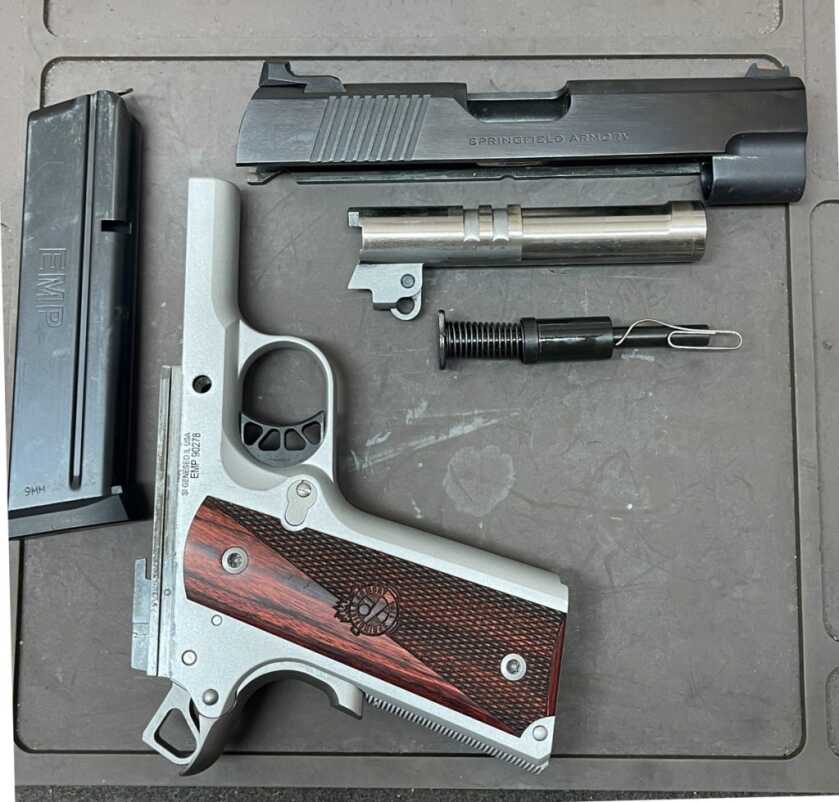
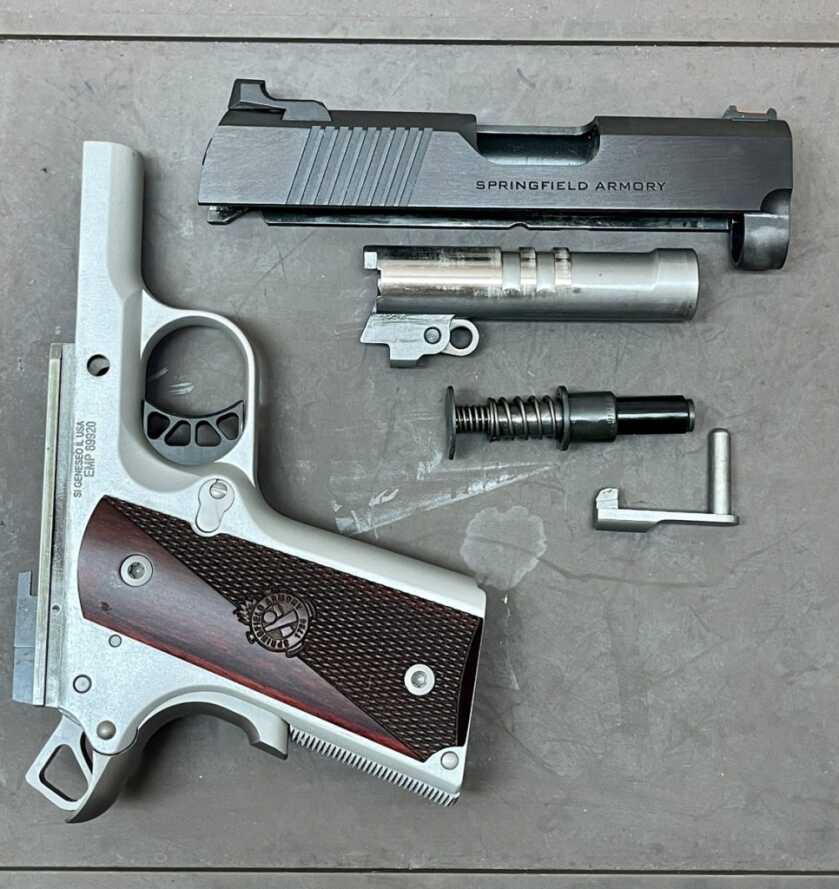
Field stripping on the pistols is somewhat different due to the recoil spring designs. For both pistols, the first step is to pull the slide back, align the disassembly notch, and remove the slide stop. On the 4” gun, the recoil spring is compressed and a paperclip is inserted into a hole in the recoil spring guide. With the spring compressed, the entire assembly can be removed. On the 3” model, the recoil spring is compressed and a takedown spacer is clipped on the recoil spring guide. This allows the shorter recoil system to be removed.

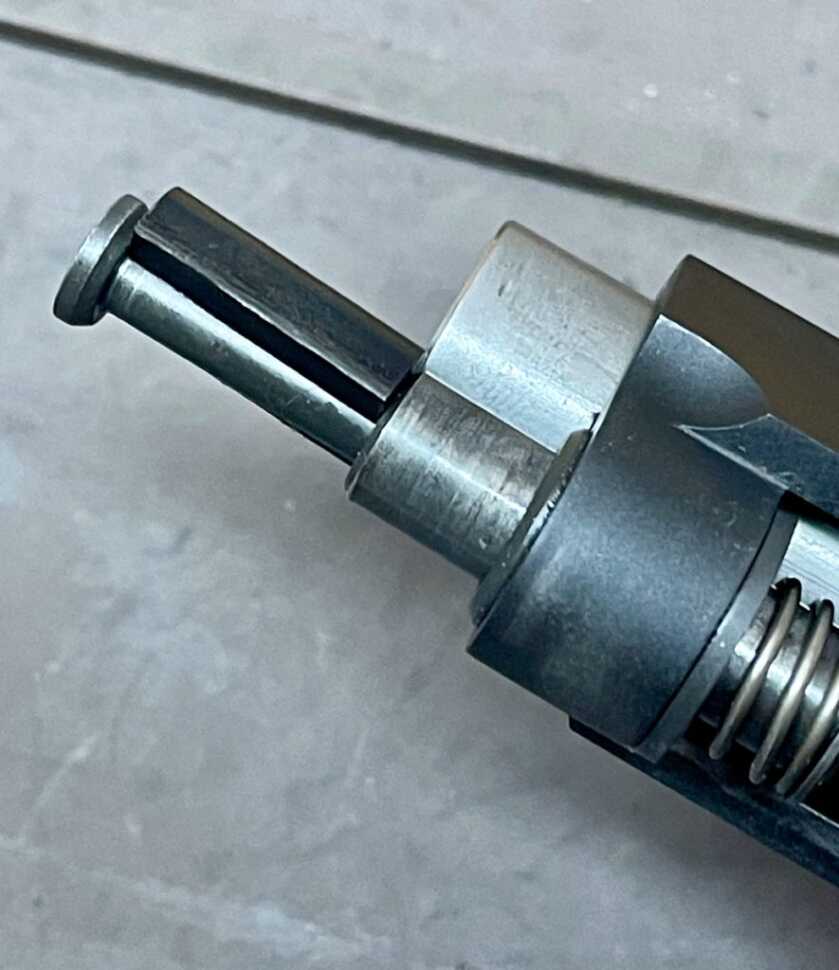
Range Time
At the range, I tested both pistols with five premium personal defense loads. Both pistols were 100% reliable with these loads and several hundred rounds of standard ball ammo.
| Load | Ronin EMP Compact | Ronin EMP |
| Federal HST Micro 150 gr. | 863 | 866 |
| Federal Syntech Defense 138 gr. | 1,002 | 1,018 |
| Federal Punch 124 gr. JHP | 1,095 | 1,116 |
| Speer G2 Gold Dot 147 gr. | 939 | 951 |
| Super Vel +P JHP 115 gr. SCHP | 1,163 | 1,179 |
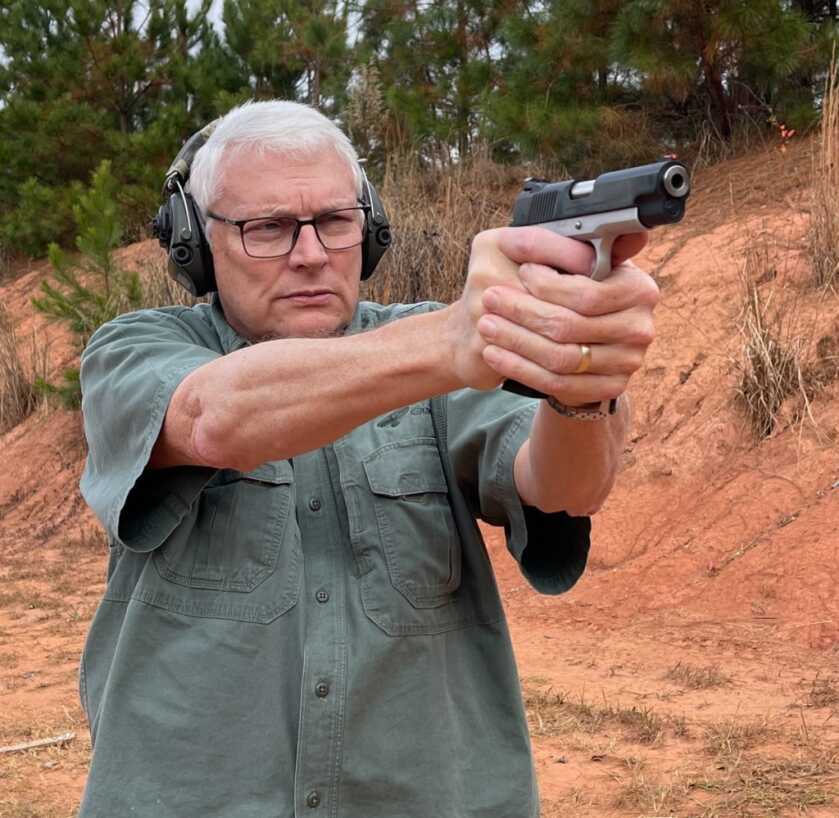

The guns ran very well and, at 25 yards from a bench, both produced groups that were 3”, or better when I did my part. The best group with the 4” model was shot with Federal HST and measured 1.75”. With the compact gun, the same load produced a 1.5” group.
Shooting plates from 15 yards, both guns tracked well. The fiber optic made following the front sight, during recoil, very easy. While the compact model has a shorter grip, it was long enough to allow a full grip with all four fingers of the support hand.
Preferences
There were a couple of things that, given the chance, I would change on the pistols. The first, and most critical, change I would make would be the stocks. The thin stocks, combined with the thinner EMP frame, just did not fill my hand well. In addition, I found that I did not always disengage the grip safety. It was noted that one of the other shooters had smaller hands and did not have this issue. When I got home, I pulled the thin stocks and installed a pair of standard stocks on the 4” pistol. This seemed to solve the problem.

Second, I wish Springfield would contour the edges on the thumb safety. This was not a huge issue but radiused edges would be an improvement. Finally, it would be nice if they offered a flush-fit magazine for the compact model. This would mean a reduction of one round but would be a nice addition. Other than those two issues, everything else was positive.
Final Thoughts
As with other projects, I wish that time, and ammo allotments had allowed more range time. Unfortunately, while things are getting better, the days of running multi-thousand-round torture tests are over.
For additional information, visit Springfield Armory
Specs
| 1911 Ronin EMP 4” (PX9123L) | |
| Caliber | 9mm |
| Finish | Blued Slide/Satin Aluminum Frame |
| Barrel | Match Grade 4” Ramped 1:16 |
| Rear Sight | Tactical Rack White Dot |
| Front Sight | Red Fiber Optic |
| Recoil System | Flat wire/Full Length Guide Rod |
| Stocks | Thin Wood Half Checkered |
| Weight | 27.5 oz. |
| Length | 7.6” |
| Height | 5.1” |
| MSPR | $899 |
| 1911 Ronin EMP 3” (PX9124L) | |
| Caliber | 9mm |
| Finish | Blued Slide/Satin Aluminum Frame |
| Barrel | Match Grade 3” Ramped 1:16 |
| Rear Sight | Tactical Rack White Dot |
| Front Sight | Red Fiber Optic |
| Recoil System | Flat wire/Full Length Guide Rod |
| Stocks | Thin Wood Half Checkered |
| Weight | 24 oz. |
| Length | 6.6” |
| Height | 4.8” |
| MSPR | $899 |

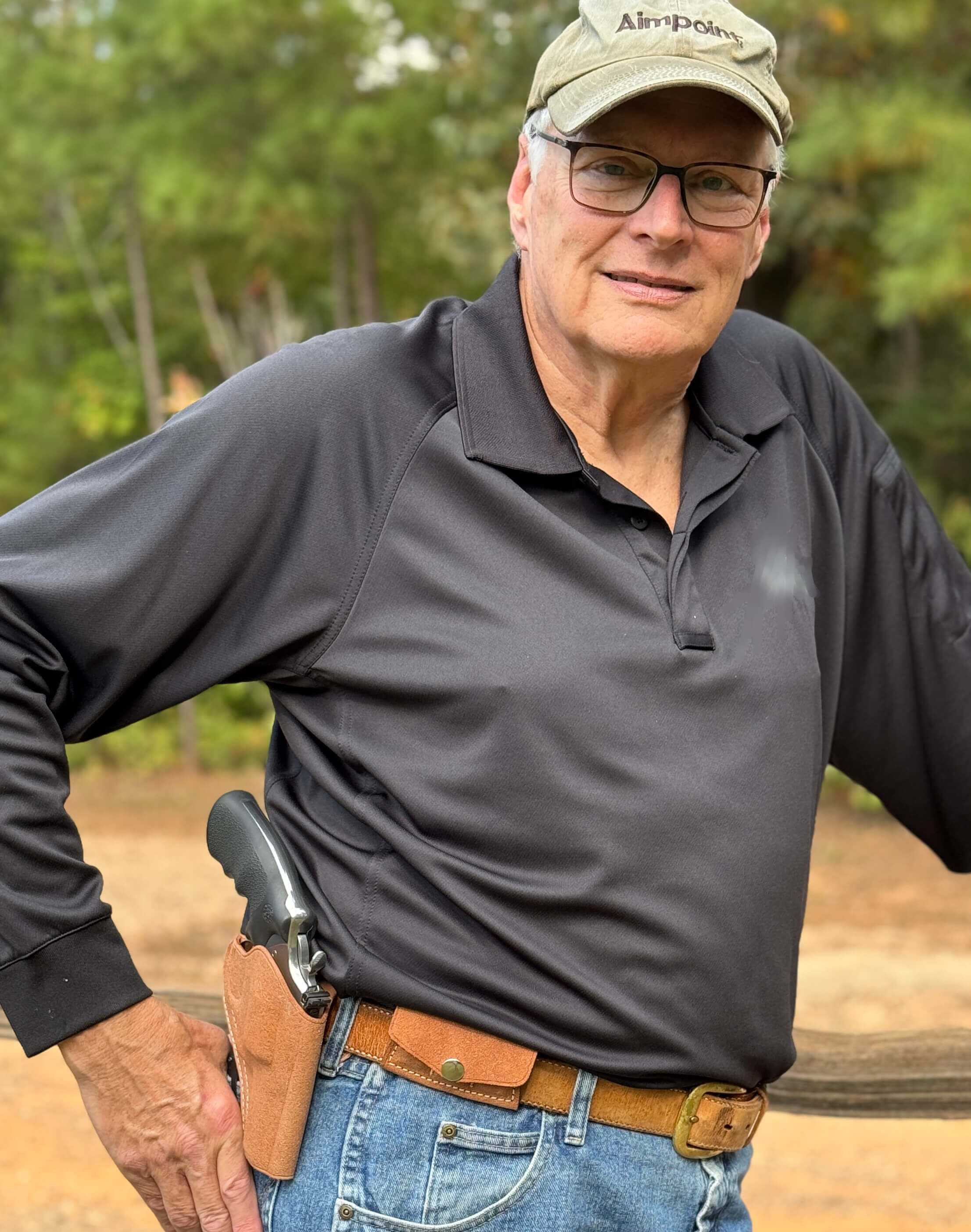
I know they make it the .40 but I would love it 8f they brought it out in a .45 auto in the 3″ model !
I’ll keep my all steel Colt Officers ACP in 45 cal. in a gorgeous high polished deep blue. I paid 850 for the colt. The just make em cheaper nowadays with aluminum and want to charge you an arm and a leg.
I would consider a relationship with the 4″ version. The 3″ is just too awkward looking for more than a one night stand.
I was in lust with the EMP for years before I finally was able to get one–on a double sale, with a range bag and ten mags in a package deal straight from Springfield. Te still sell for more than $1000. I added the front strap serrated insert from Brownells, and this little gun shoots fantastically. The only question I have is whether Springfield will sell me just a slide so I can mix and match depending what mood I am in. The only thing I do not like about the gun is that little clip you have to install to take the gun down. Even the Kimber system used on the 4″ Ronin would be an improvement.
My 3””is picky about ammo. I have used 6-8 different manufacturers and bullet weights. In my case the lighter the round the more reliable the feed. I will not carry it when it matters until it hopefully improves with use.
I am trying to find mag for a Fire cat 9mm
I believe spring field production was in1991
Any information will be helpful
Ha! I remember when all those Gen-U-Wine gun “Experts” peopo person ( aka gun whores) types said the plastic guns will kill off the 1911 pattern guns. Double Ha! They cant sell em fast enough. Why? Because metal/ steel guns have something plastic guns will never have- Soul. People equate steel guns with quality- right or wrong its true. Most importantly- no manufacturer can afford to keep making something that dosnt sell. And the 1911 sells.
Very fussy on taking reloaded ammo.
There is a reason why 1911 style pistols are being produced more than one hundred years after they were originally produced. They keep on evolving with time. I like that you can get parts for older guns to keep them working.